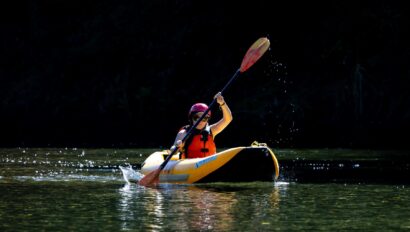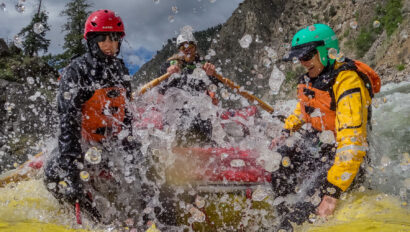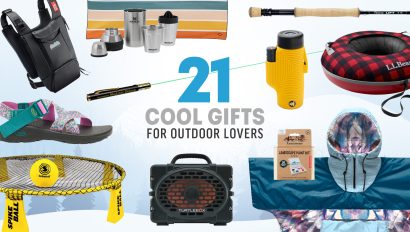
Sleeping bags are fundamental to enjoying the outdoors. But with dozens of different designs to choose from, it can be daunting to choose the bag that will serve you best. To make sure you get the right sleeping bag, you should learn some basics and then ask yourself a few key questions about how you plan to use it before you march into a gear store or click the purchase button.
The Basics: Sleeping Bag Design & Technology
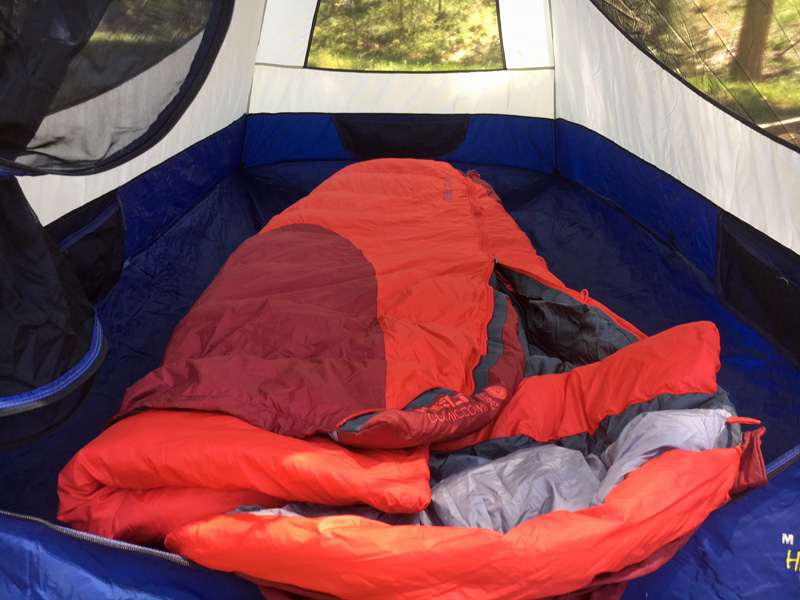
Shape
Mummy bags are tapered toward the footbox (where your feet rest when you are lying in the bag). This helps save weight and pack space and keeps you warmer because there is less empty space in the bag. They usually have a hood that you can tighten around your head for an extra bit of warmth. Some women’s sleeping bags are shaped to better accommodate women’s bodies and may have extra fill material since women often sleep a bit colder than most men.
In general, most decent bags are mummy-shaped these days. Rectangular bags are too heavy and bulky for much beyond a backyard campout or basement slumber party.
Loft
Loft describes how thick the sleeping bag gets when it’s unpacked and ready for use. The more loft, the thicker the bag. This thickness traps air and the more air that’s trapped, the warmer you sleep. Simply put, higher loft bags are warmer.
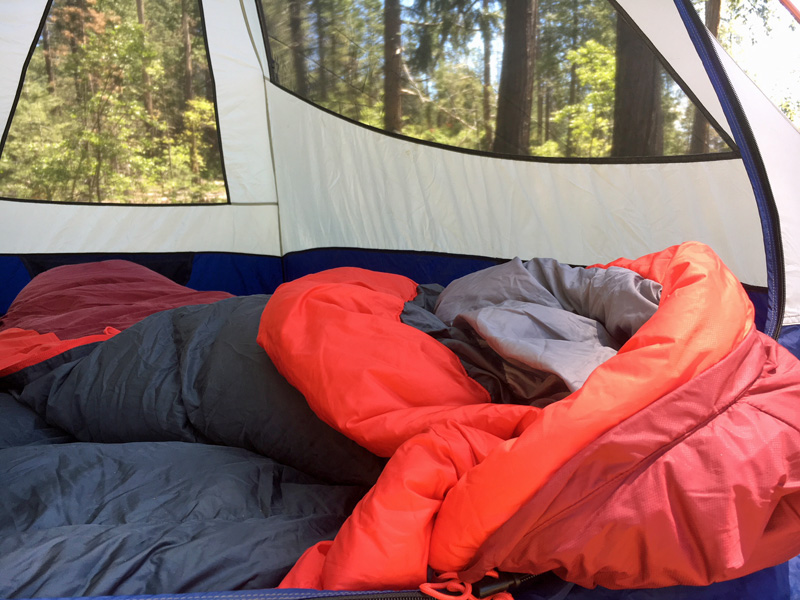
Fill material
Synthetic fibers are usually found in less expensive sleeping bags. Synthetic fibers don’t have the loft of down, so more of them are needed to maintain warmth. This makes synthetic bags heavier and bulkier than down bags. One distinct advantage to synthetic sleeping bags is that they will still keep you warm when they are wet. The other is price.
Duck (or goose) down is the other fill material used in sleeping bags. Most down bags today are made with duck down, but you can still find goose down bags at the highest end of the spectrum. Regardless of duck or goose, down bags are lighter and pack down much smaller than synthetic bags.
Some bags may indicate the “fill power” of the down. This equates to how much loft (and therefore warmth-per-weight) that specific down has. So, the higher the fill rating, the more loft per piece of down, which means more warmth with less material. Basically, bags that use high fill power down will be lighter and more compressible than bags rated for the same temperature, but that use down with a lower fill power. They’ll also be more expensive, but you knew that was coming.
Price isn’t the only downside to down bags: When the fluffy little feathers get wet, they turn into a heavy, clumpy, useless mess that won’t keep you warm and take forever to dry. Bag makers have developed treatments that make down water resistant to help combat this, and they work fairly well. But they’re not waterproof – soaking a treated bag will still render it pretty much useless. Some manufacturers are also experimenting with hybrid bags that take advantage of the best properties of each type of insulation.
Warmth Rating
Warmth ratings used to be misleading. Manufacturers used their own testing methods to determine the warmth rating of their particular bags. Needless to say, these estimations were a mixed bag of accuracy. Fortunately, most companies have now adopted the EN rating system, which uses heat-sensitive dummies and standardized-testing methods performed by an independent third party. This ensures EN ratings are consistent across brands and bag types.
Warmth ratings indicate the lowest temperature the bag will keep a person warm. If a bag is rated to 30 degrees, then it should keep the average person comfortable in 30-degree weather. Importantly, the ratings take into account that the user is wearing long underwear and a hat and using a sleeping pad of some kind. You may see EN-rated bags with a “comfort rating” and a ”lower-level or limit rating.” The comfort rating indicates the lowest temperature where a woman, or a cold-sleeper, would feel comfortable in that bag. The lower-level/limit rating is the lowest temperature where a man, or a warm-sleeper, could sleep comfortably.
It’s probably a good idea to be a bit conservative with your temperature rating. It’s easier and more comfortable to unzip a bag or take off your long underwear than to sleep in all of your layers. If you’re a cold-sleeper, get a bag that’s rated for colder temps than the conditions in which you plan to use it.
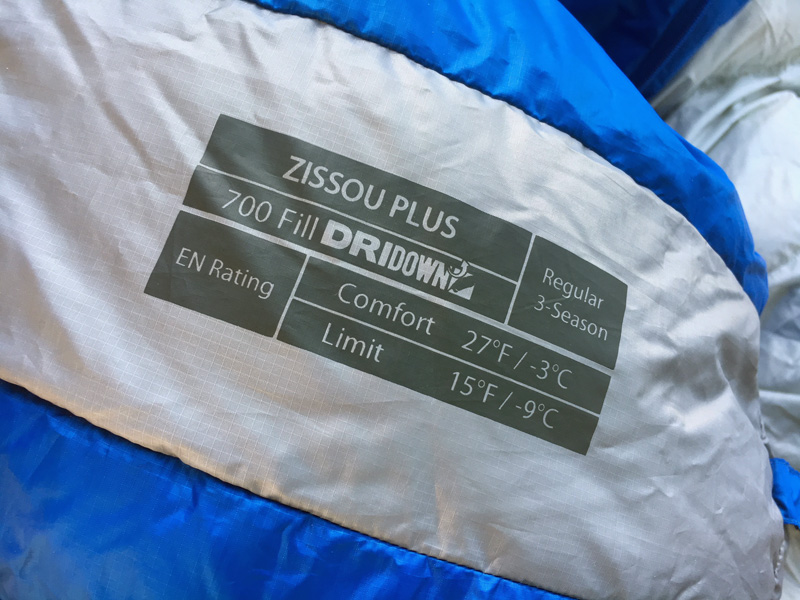
Length
Bags typically come in two sizes: regular and long. Since empty space in a sleeping bag usually means cold air, it’s good to get a bag that fits your height.
If you’re using your bag for winter expeditions and you want to shove your liners or boots in the bottom, a long bag may make sense. You can pack extra layers in the bottom to fill up space or create a barrier between your boots and your feet. If you’re doing ultra-light bikepacking, backpacking or expedition paddling where every ounce counts, get the shortest bag you can fit into. Women-specific bags usually come in one size that fits someone up to 5’6”, but you can also find petite bags out there.
Baffles
Baffles are the sewn compartments that run through the bag. They keep the fill material – synthetic fibers or down feathers – from bunching up in the bottom or top of the bag. The main downside to having lots of baffles is that they lose heat. The upside is that the insulation stays better positioned in the bag.
What to Ask: Find the Type of Sleeping Bag That’s Right For You
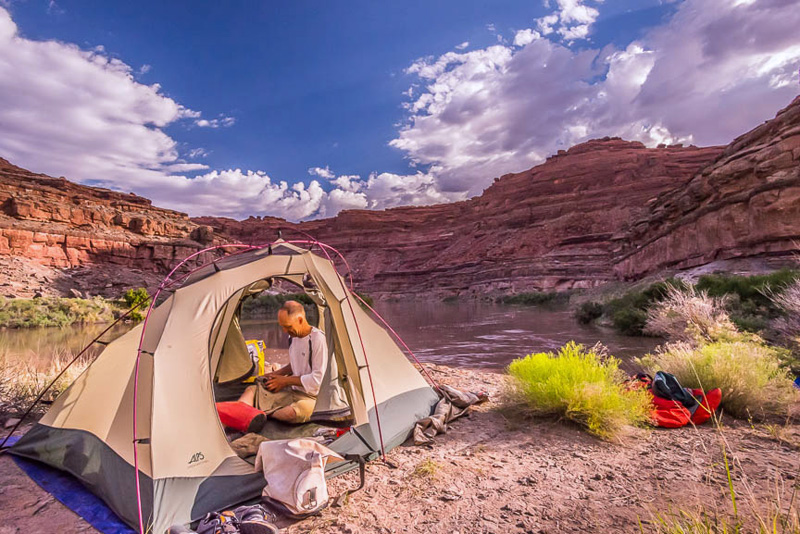
How will you camp most of the time?
If car or raft camping make up 80 percent of your outdoor adventures, then size and weight are less of a concern. Consider saving a few bucks and get a synthetic bag. Likewise, if cost is a primary factor, then synthetic is the easy choice. Synthetic bags work fine if you do the occasional backpacking or overnight paddling trip. I used synthetic bags for more than two decades of backpacking, bike packing, and multi-day SUP and canoe trips because I was too cheap to buy a down bag. They worked fine, even if they were bulky and heavy.
If your preferred adventures put a premium on reducing space and weight, then spend the cash and get a down sleeping bag. Down bags are amazingly light and compressible, two things that will make your trips easier and more enjoyable.
Where will you camp most of the time?
Wet vs. Dry: For wet climates, synthetic sleeping bags offer the advantage of keeping you warm when they are wet. You can certainly use a down sleeping bag in wet environments, but you have to be careful to keep it dry. A few raindrops won’t render a down bag useless, but anyone who’s camped in New England or the Pacific Northwest knows that it can be nearly impossible to keep anything dry when it rains day after day. If you’re a river rat paddling rugged whitewater where there’s a good chance of flipping your boat (Grand Canyon anyone?), a synthetic bag will offer peace of mind and ease of use. If it’s typically pretty dry where you camp, a down bag will be easier to carry and fit better in your pack.
Hot vs. Cold: If you live in a northern climate, then a 50-degree bag may be comfortable for only two weekends per year. Get something that will keep you warm enough to camp in spring and fall, like a 25- or 35-degree bag. If you live in Texas, you’ll be sweltering in a 25-degree bag when the sun heats up your tent. Consider a warm-weather specific bag.
Elevation: Definitely consider what elevation you’ll be sleeping at. It gets much colder at altitude (especially at night and during shoulder seasons), so a warmer bag will prove more comfortable if you’re sleeping on top of a mountain and not on the beach.
How do you sleep?
Are you a side sleeper? Do you saw logs laying on your back all night long? Maybe you’re a squirmer and shift around a lot. Roomier bags will be more comfortable for squirmers and side sleepers. Back sleepers may be snug as a bug in a tight-fitting mummy bag with a spacious footbox. If you sleep hot, consider getting a bag with two zippers so you can open up the bottom of the bag and circulate some air. If you sleep cold, jump down ten degrees from what you expect will be the coldest temps you’ll face.
How much money do you have to spend?
As with any piece of gear, you get what you pay for. The more expensive the bag, the better performing it will be. That doesn’t mean you can’t spend dozens of nights a year comfortably sleeping in a $150 bag (I did, for years). But a decent night of sleep is critical to enjoying any outdoor adventure to its fullest. It can be well worth shelling out a few extra bucks for a high-quality sleeping bag. Take advantage of sales and keep an eye on local gear swaps if you’re pinching pennies.
You can wash sleeping bags, so used bags can also be a good value. Just remember that bags lose their loft over time, so a well-used ten-year-old bag may not perform at the low end of its temperature rating. Be sure to use specialty detergents, which will clean down and synthetic fibers and help restore loft, extending an old bag’s useful life. Generally, buy the best bag you can afford. Your back, legs and shoulders will thank you every time you hoist your pack.
Other Considerations…
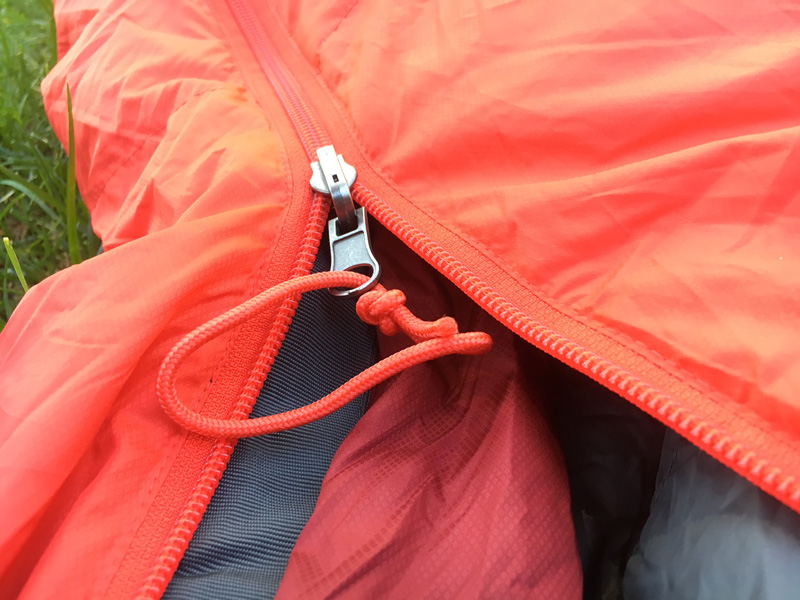
Zippers
Some sleeping bags have zippers on the right, some on the left. Some offer either. Manufacturers use two different sizes of zippers. Unless you’re planning to zip your bag together with your partner’s (in which case you should make sure you have same-sized zippers on opposite sides), it doesn’t really matter. Three-quarter or half-zippers save weight and add warmth, but make it harder to get in and out of the bag or to ventilate if things get steamy.
Bottom insulation
A few years back, bag manufacturers realized that when you sleep, one side of the bag is compressed and doesn’t really insulate (no loft, no air, no warmth…). So they started making bags without any insulation on the bottom, relying on the sleeping pad alone to insulate against the ground. This is great if you don’t roll around much; it saves weight and makes the bag smaller. But if you roll over and your bag rolls with you (this happens to me all the time), then you can end up cold and uncomfortable.
Big Agnes pioneered this technology and includes a “pad sleeve” on the bottom of many of their bags. Simply slide your sleeping pad into the sleeve and you stay on top of the pad all night long. My wife has one of these and loves it. I tend to roll around too much and find this set up awkward.
Sustainability
Outdoorsy people understand our environment isn’t nearly as healthy as it should be (understatement of the year). Outdoor gear manufacturers know this too, and companies are pioneering more sustainable manufacturing practices. You can get bags with synthetic insulation made from recycled materials. Some manufacturers offer traceable and cruelty-free down in their bags. These features usually increase cost or marginally compromise performance, but it’s worth considering the impact your bag’s manufacturing had on the environment.
Specialty bags / Building your quiver
As you start to push your outdoor adventures beyond a weekend of car camping or short overnight to a backcountry lake, you’ll find that one bag does not, in fact, fit all. You’ll need a sleeping bag quiver to take up more space in your gear closet. All the same questions still apply, but your answers should take into account the specific way you’ll use the bag in question.
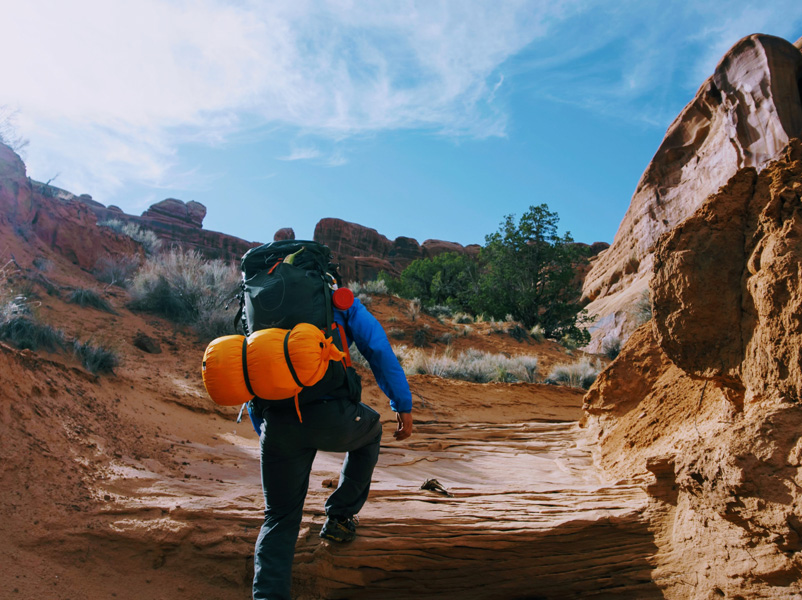
If you’re doing a lot of winter camping or heading out on a week-long backcountry tour with tons of vertical, spend the cash and get a cushy down bag that will pack down small and keep you toasty at night. You could even consider an ultra-light, camping-specific down blanket that will save yet more weight. Just trying out winter camping? A 0-degree synthetic bag will work fine as you build your skills and experience.
Planning an epic bikepacking trip in Moab? Self-supporting a six-day paddle through the Boundary Waters? Get a down bag if you have the cash. It will pack down small and make the uphills and portages a lot easier. Sea kayaking for two weeks in Alaska? A 25-degree synthetic bag is probably the best choice; it will survive a dunking, work fine in pounding rain, and will shove down into your kayak without too much trouble.
You don’t have to shell out $1,500 bucks on a bunch of sleeping bags all at once. Buy the best bag you can afford for the majority of what you’ll be doing. For most of us, that’s probably a 3-season bag between 20 and 40 degrees that will work in the fall and spring and, when vented, just as well when summer hits. Then, add in additional bags for specific situations as need arises.
I do more mid-summer trips than winter camping, so I spent some extra money on a lightweight, water-repellent, 45-degree down bag for my summer adventures in Montana where I live. I used a coupon to buy an affordable 0-degree synthetic bag for the occasional winter camping trip I do. You can also rent specialty bags, which make it cheap and easy to get out when you don’t have the right bag for the trip. It’s also a good way to learn what features you do or don’t want.
Still don’t know what type of sleeping bag to get? Don’t stress out. Take a moment and think carefully about your primary use, consider how you sleep, and decide what you can afford. Then just pick a bag with the features that match your needs. With so many manufacturers making high-quality bags these days, you can be confident that whatever bag you choose will serve you well for years to come.
Photos: Sleeping bag photos – Cari Morgan; Cataract Canyon camping – James Kaiser; Moab backpacking by Matt Gross/Unsplash
Related Posts
Sign up for Our Newsletter

